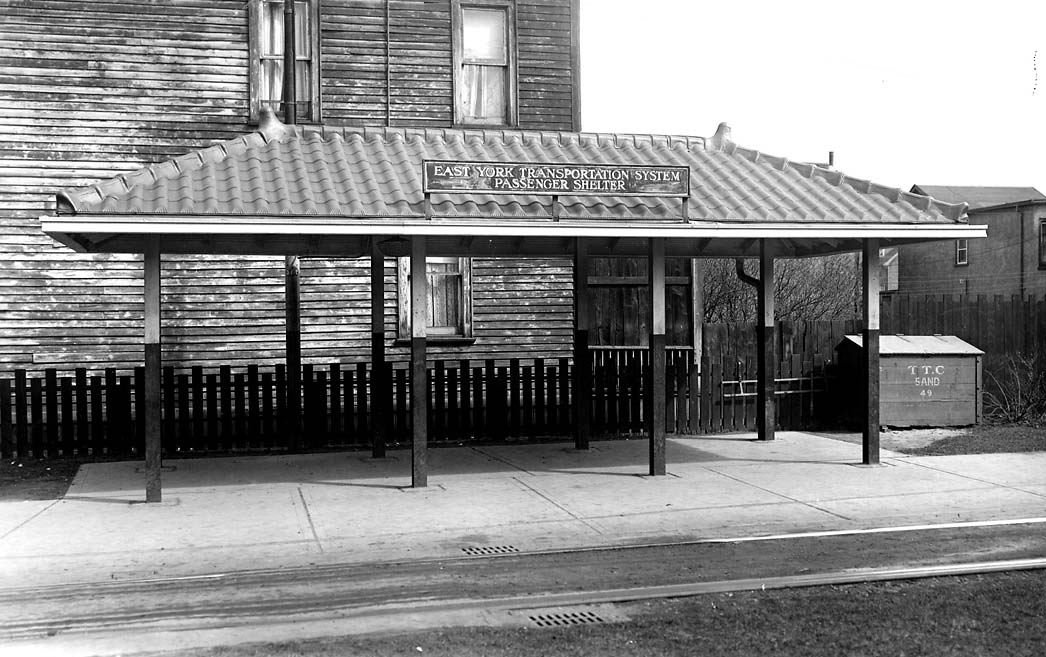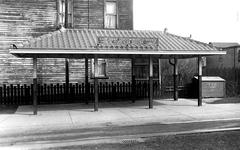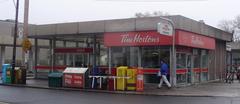
Pape Toronto Visiting Hours, Tickets, and Historical Sites Guide
Date: 15/06/2025
Introduction to Pape Toronto and Its Historical Significance
Pape Village and the Pape Avenue corridor, nestled within Toronto’s bustling east end, present a captivating fusion of layered history, multicultural vibrancy, and modern urban life. This area is notable for its preserved Edwardian homes, heritage churches such as Don Mills United Church, and lively commercial strips featuring family-run Greek bakeries and diverse eateries. The neighbourhood’s roots stretch back to the late 18th century, shaped first by early settlers like the Taylors and Helliwells, and later by waves of immigrants—most notably the post-war Greek community that established the now-iconic Greektown along Danforth Avenue (Christine Cowern Team; Wikipedia).
Over the years, Pape Village has balanced heritage preservation with growth, especially under the guidance of the local Business Improvement Area (BIA). Modern developments, such as the Ontario Line transit expansion, promise enhanced connectivity but also bring changes to the neighborhood’s landscape (Toronto Observer; BlogTO). Beyond its commercial appeal, Pape Avenue thrives as a multicultural hub, highlighted by events like Taste of the Danforth, which celebrates the area’s diversity (Taste of the Danforth).
The nearby Riverdale Monument stands as a symbol of both Indigenous and settler heritage and offers year-round access, supported by guided tours from local historical groups (Toronto Historical Society). With accessible transit options, a welcoming community, and a rich tapestry of stories, Pape Village is a vibrant gateway to Toronto’s past and present (Pape Village BIA; We Love Toronto).
Overview
- Introduction to Pape Village and Pape Avenue
- Historical evolution: from early settlements, annexation, and urban growth to the rise of Greektown and ongoing urban transformation
- Heritage landmarks and notable sites
- Visiting hours, ticketing, accessibility, and parking
- Cultural, social, and culinary highlights
- Festivals, public art, and LGBTQ+ inclusivity
- Community engagement and development
- Safety and local etiquette
- Practical visitor information and travel tips
- FAQ and additional resources
Historical Overview
Early Settlement and Land Development
The Pape area’s origins date to the late 18th and early 19th centuries, initially surveyed as Lot 11 south of York Township in 1791. Early families like the Taylors and Helliwells were instrumental in shaping the community, with John Eastwood naming Todmorden after his Yorkshire hometown (Christine Cowern Team; ScenesTO). Though Todmorden was never formally incorporated, its name persisted well into the 20th century.
Annexation and Urban Growth
As Toronto expanded in the late 1800s, Chester (later part of Riverdale) successfully sought annexation in 1909. This brought structured urban development, especially after the completion of the Prince Edward Viaduct in 1918 and the East York-Leaside Viaduct in the 1920s, spurring residential and commercial growth along Pape Avenue (Christine Cowern Team; ScenesTO).
Commercial and Cultural Evolution
The 1930s and onward saw an influx of Italian and Greek immigrants, who established produce stores and businesses, shaping the commercial identity of Pape Village. Landmarks such as Don Mills United Church and Taylor Cemetery date back to the 19th century. The construction of O’Connor Drive in 1936 further connected the neighborhood, attracting more residents and businesses (Christine Cowern Team).
Post-War Immigration and Greektown
After World War II, Greek families transformed the area, opening restaurants, bakeries, and markets that fostered the emergence of Greektown along Danforth Avenue. By the 1950s–1970s, this corridor was a central gathering place for Toronto’s Greek community and remains so to this day (Christine Cowern Team; ScenesTO).
The Birth of Pape Village and Community Revitalization
The formation of the Pape Village BIA in 1986 formalized the area’s identity and drove beautification, façade restoration, and annual events. City improvement plans in 2003 further supported preservation and modernization efforts (Wikipedia; Pape Village BIA).
Recent Developments and Transformation
Major projects like the Ontario Line subway expansion and high-density developments are reshaping Pape’s landscape, bringing both opportunities and challenges (Toronto Observer; Storeys; BlogTO). Despite construction disruptions and debates over gentrification, community efforts continue to balance heritage with progress.
Heritage Landmarks and Notable Sites
Preserved Edwardian homes, Don Mills United Church, Taylor Cemetery, and the Riverdale Monument serve as tangible links to the area’s historical evolution, while the commercial strip showcases a thriving multicultural business community (Christine Cowern Team; Pape Village BIA).
Visiting Pape Village: Hours, Tickets, and Accessibility
- Neighbourhood Access: Open 24/7, with most shops and restaurants operating 10:00 AM–9:00 PM. Some eateries have extended hours.
- Heritage Sites: Don Mills United Church and Taylor Cemetery have variable hours; check ahead for visiting times.
- Admission: No general fee; some special tours or festivals may require tickets (available via Pape Village BIA).
- Accessibility: Pedestrian-friendly, with wheelchair-accessible sidewalks and the fully accessible Pape subway station (TTC Line 2). Some older buildings may have limited accessibility.
- Parking: Limited street parking; paid lots nearby. Public transit and cycling encouraged.
Exploring Pape Avenue: Culture, Community, and Attractions
Multicultural Fabric and Community Identity
Pape Avenue and Danforth are renowned for their multiculturalism, with Greektown at the heart, offering authentic Greek cuisine, bakeries, and the annual Taste of the Danforth festival. The area’s diversity is further enriched by South Asian, Middle Eastern, Caribbean, and East Asian influences (historyoftoronto.ca; ontarioaway.com).
Social Hubs, Parks, and Historical Sites
Local cafes, parks (Withrow and Riverdale Park East), and venues like the Danforth Music Hall offer gathering spaces and live events. The Pape/Danforth Library and community centers provide multilingual resources (ninaoutandabout.ca).
Festivals, Events, and Public Art
Beyond Taste of the Danforth, the area hosts multicultural fairs, Pride events, farmers’ markets, and features vibrant public art and murals. Graffiti Alley, though not on Pape, is a nearby highlight of Toronto’s street art scene.
LGBTQ+ Inclusivity
Pape/Danforth is widely recognized for LGBTQ+ inclusivity, with community events and supportive businesses. The city’s annual Pride Parade and local gatherings reinforce this welcoming atmosphere.
Culinary Diversity
From classic Greek eateries to Middle Eastern, South Asian, vegan, and international options, the Pape corridor offers a global culinary experience. Nearby St. Lawrence Market and guided food tours provide additional flavors (ninaoutandabout.ca; atastefortravel.ca).
Practical Visitor Information
- Hours: Shops and restaurants usually open 10 AM–9 PM. Parks: dawn to dusk. Danforth Music Hall: evening events.
- Tickets: Not required for general visits. Purchase in advance for performances at venues.
- Transit: Pape subway (Line 2), multiple bus routes (citypass.com).
- Accessibility: Flat terrain, accessible transit, and many wheelchair-friendly businesses.
- Parking: Street and paid lots; public transit recommended.
- Etiquette: Greet shopkeepers, tip 15–20%, and respect multicultural norms (citypass.com).
Community and Urban Development
Residents participate in associations, heritage walks, and environmental projects (eventbrite.ca). Social clubs and tours are available (meetup.com). Gentrification and new developments are ongoing, but community leaders aim to preserve affordability and neighborhood character (historyoftoronto.ca).
Exploring Pape Toronto: Attractions and Local Tips
- Greektown: No tickets required for general visits or the Taste of the Danforth festival (Condé Nast Traveler).
- Riverdale Park East: Open 6 AM–11 PM, free admission (PlanetWare).
- Withrow Park: Dawn to dusk, seasonal farmers’ market (Saturdays, 9 AM–2 PM, May–October).
- Carlaw Industrial Heritage District: Art galleries open Wed–Sun, noon–6 PM, free.
- Danforth Music Hall: Ticketed events; check We Love Toronto.
- Holy Name Parish: Open for Sunday services and events (PlanetWare).
- Shopping: Independent boutiques open 10 AM–6 PM, Tues–Sun (Time Out Toronto).
- Nightlife: Live music, bars, and murals accessible daily (We Love Toronto).
- Outdoor Activities: Don Valley trails, year-round, dawn to dusk (PlanetWare).
- Community Events: Check local listings for art fairs and celebrations.
- Transit & Accessibility: Subway access, bike lanes, wheelchair-friendly venues (Condé Nast Traveler).
The Riverdale Monument: Visitor Guide
- Location: Riverdale Park East, near Pape and Danforth.
- Hours: Dawn to dusk, daily.
- Tickets: Free admission.
- Guided Tours: Available seasonally through the Toronto Historical Society.
- Getting There: TTC subway (Pape Station), buses (25, 81), or streetcar (506 Carlton).
- Accessibility: Step-free paths, tactile indicators, accessible restrooms (TTC Accessibility Guide).
- Parking: Paid and limited free street parking or Green P lots.
- Nearby Attractions: Pape/Danforth Library (Library Info), Greektown, Riverdale Park amenities.
- Tips: Ideal at sunset for skyline views, respect monument and park guidelines, dress for weather.
- Safety: Safe neighborhood; standard urban precautions apply.
FAQ
Q: What are the visiting hours for Pape Village and its attractions?
A: The neighborhood is open year-round. Shops/restaurants: 10 AM–9 PM; parks: dawn to dusk.
Q: Are tickets needed for festivals and attractions?
A: No tickets for general neighborhood visits or most festivals. Tickets may be required for performances or special tours.
Q: How do I reach Pape Village?
A: Use Pape subway station (Line 2), bus routes, or bike lanes.
Q: Is the area accessible?
A: Yes, most areas are wheelchair accessible, with accessible transit and facilities.
Q: Where can I park?
A: Limited street parking and several paid lots; public transit is advised during busy periods.
Visuals and Interactive Elements
- Photo galleries, maps, and virtual tours are available via the Pape Village BIA and the official Toronto Parks website.
- For more, check out articles on “Top Toronto Neighborhoods to Visit,” “Guide to Toronto Festivals,” and “Toronto Public Transit Tips.”
Summary of Key Visitor Tips
Pape Village and its surrounding neighborhoods offer an authentic Toronto experience—rich in history, culture, and community spirit. From heritage sites and lively festivals to accessible parks and diverse culinary destinations, it is a showcase of the city’s multicultural vibrancy. Ongoing development brings change, but local stewardship ensures the area’s welcoming character endures (Christine Cowern Team; Toronto Historical Society; Toronto Observer; Pape Village BIA).
For a memorable visit, leverage the Audiala app for guided tours and event updates, and connect with community organizations for deeper engagement. Whether you’re drawn by history, food, or cultural festivals, Pape Village welcomes you to explore one of Toronto’s most cherished and evolving districts (Audiala; Taste of the Danforth).
Sources and Further Reading
- Christine Cowern Team
- Wikipedia: Pape Village
- Toronto Observer
- BlogTO
- Storeys
- Taste of the Danforth
- Toronto Historical Society Tours
- We Love Toronto
- Audiala
For event updates and personalized guides, download the Audiala app and follow Pape Village BIA on social media. Start planning your visit today!




























































































































































































